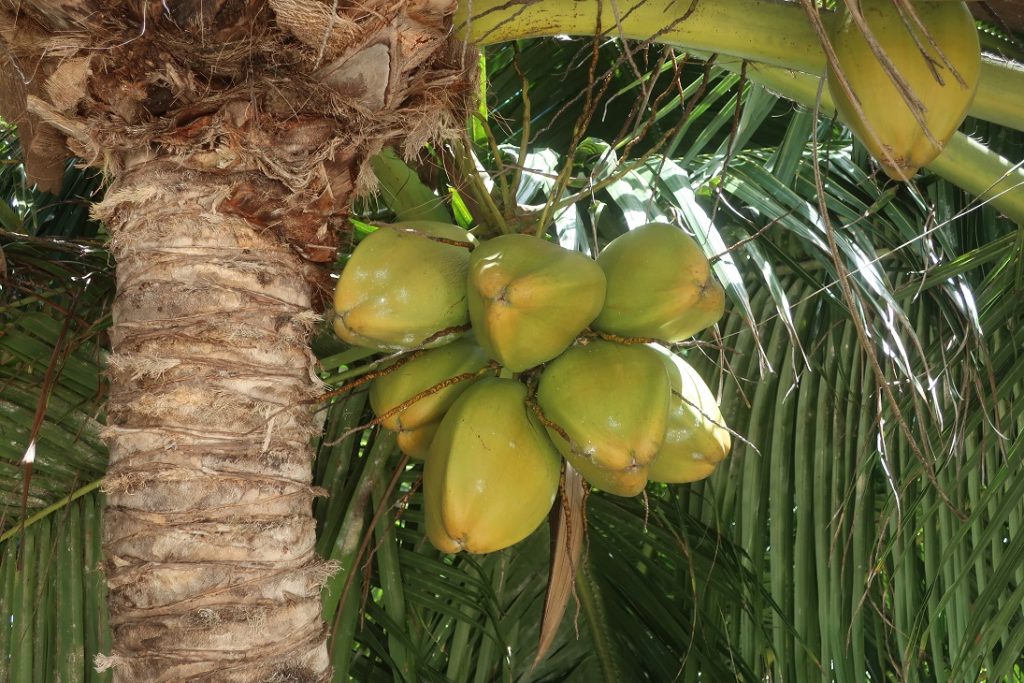
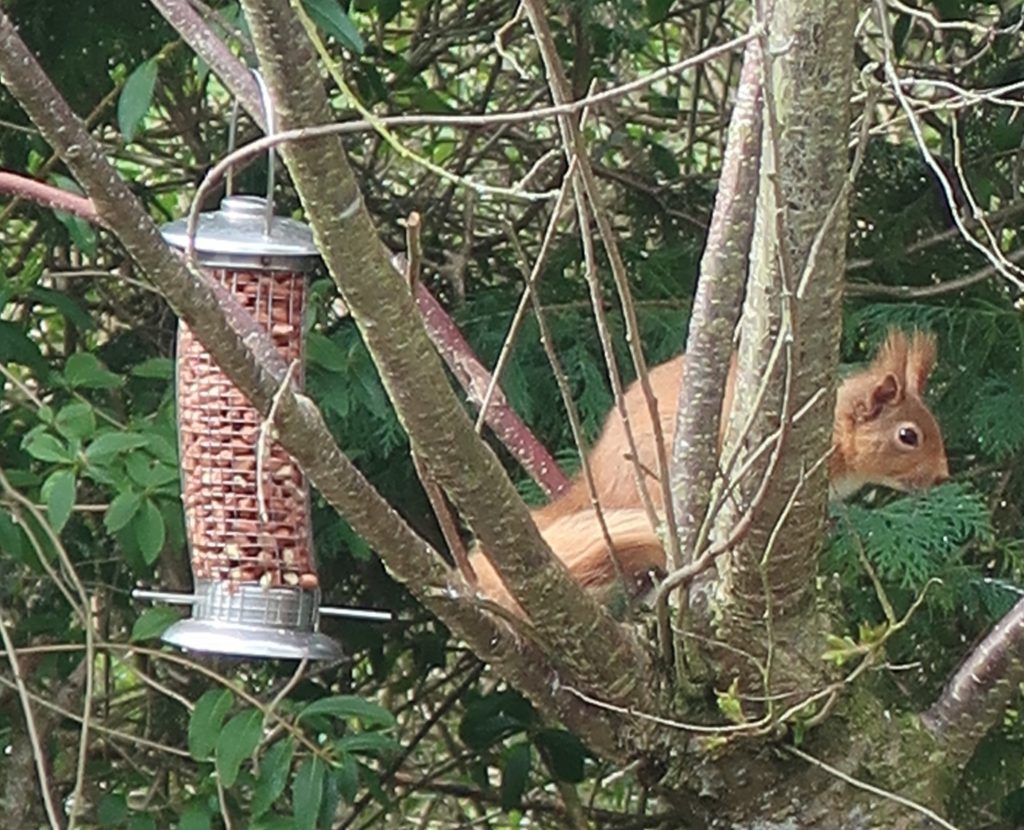
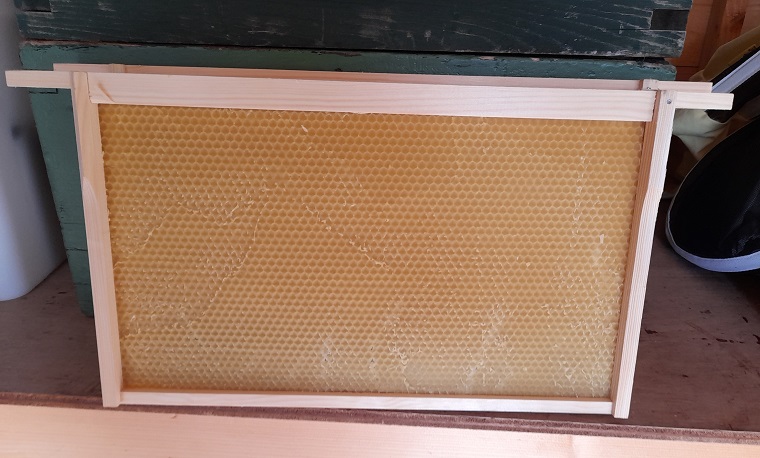
The holiday is over and I’m busy getting supers and brood boxes ready for the new season. It is very satisfying using the home-made foundation even though not every sheet is perfect. The red squirrels are back in the garden feeding on peanuts and I notice one outside the shed despite the hammering from frame- construction.
La Passe, La Digue.
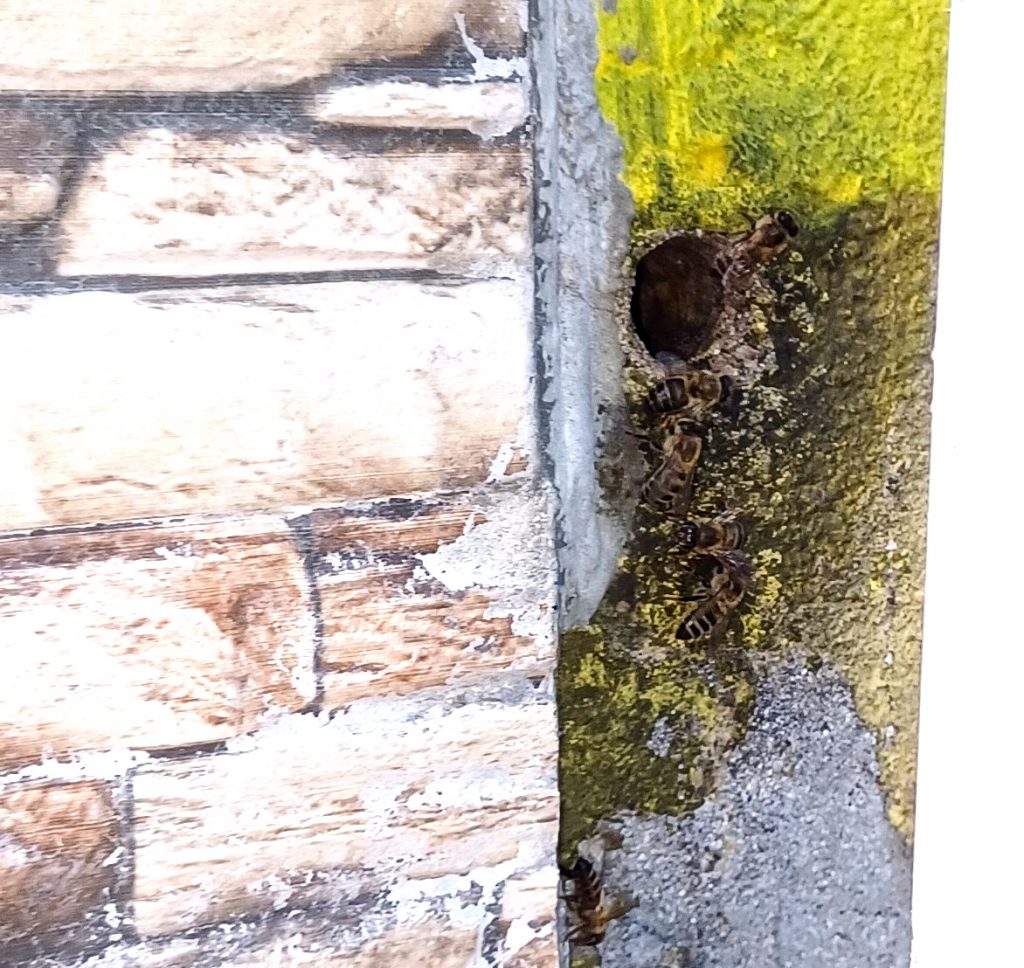
I think about my recent visit to Seychelles and Norman Dogley’s friend’s apiary in the main settlement of La Passe a couple of miles from L’Union Farm Estates Park. La Passe has a population of 2,500 resident but many more tourists swell the numbers. The main pier and ferry terminal is located here. We cycle from the farm along a dusty road with lots of other cyclists and taxis driving tourists about. On the way back we pass a speeding ox cart.
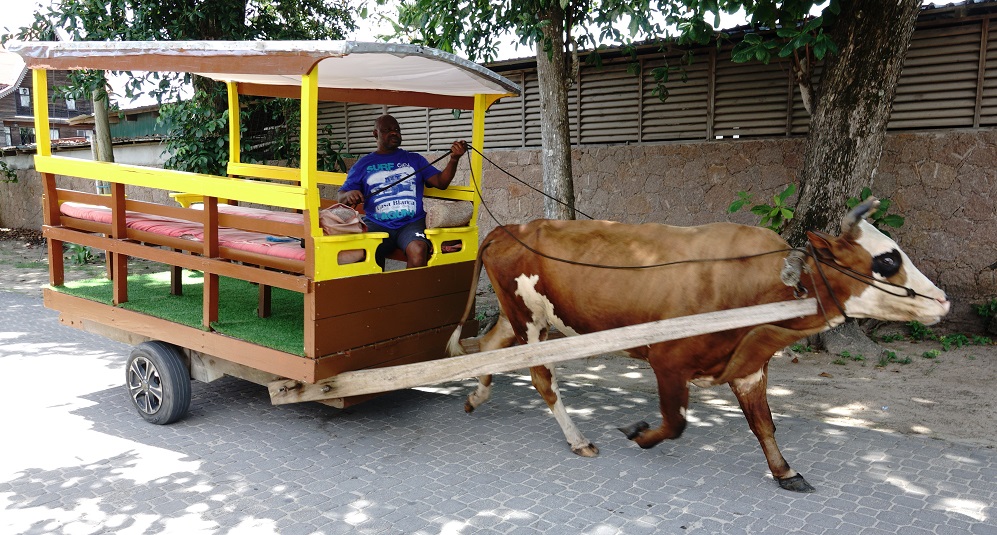
We stop outside some neat houses with flowering shrubs in bloom. Norman shows us a colony of honey bees living in a cement gate post. With year- round forage here swarms probably have a better chance of survival than in the Northern Hemisphere, and they are also a good resource for genetic material. Although Apis mellifera unicolor is the native Madagascar bee and indigenous to Seychelles, someone introduced Apis mellifera ligustica some years ago so the strain is diluted.
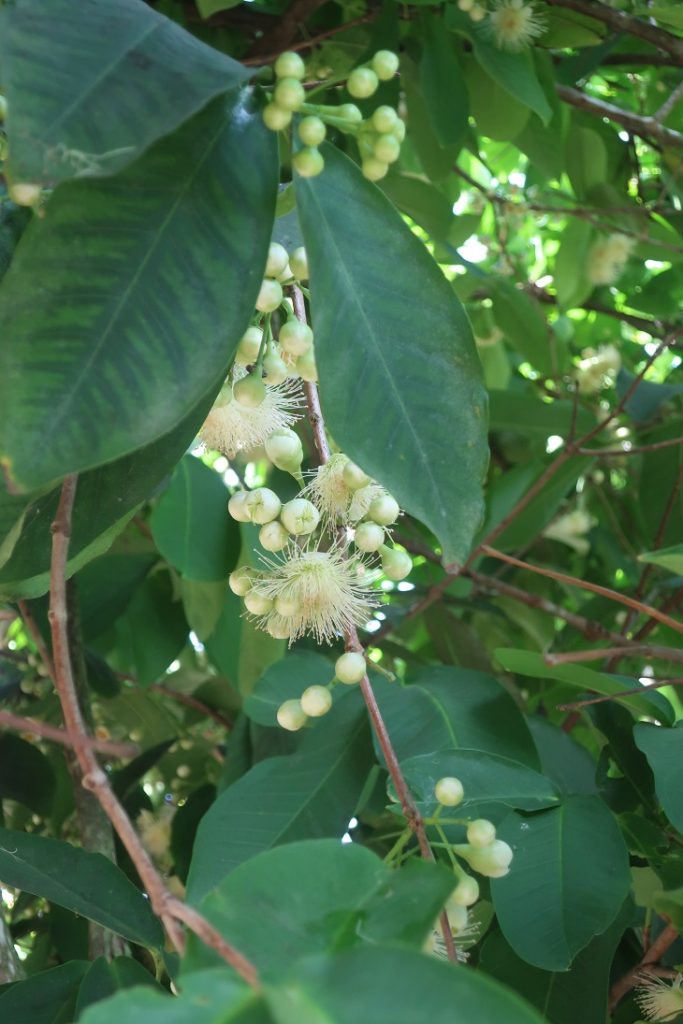
When we arrive at Son Valentine’s apiary, I see a garden full of colour and a beautiful shrub humming with honey bees and covered in feathery white flowers and pink pear- shaped fruit with a waxy skin. Son is a carpenter and out at work when we visit but he has kindly given Norman permission to show us round. Norman picks an apple from this tree which is called the rose apple, Syzgium jambo. It is a large shrub which can grow from 10-49 feet high and provides nectar and pollen in abundance. The pale pink fruit has white flesh and tastes sweet, subtle, and delicate unlike anything I have ever tasted before.

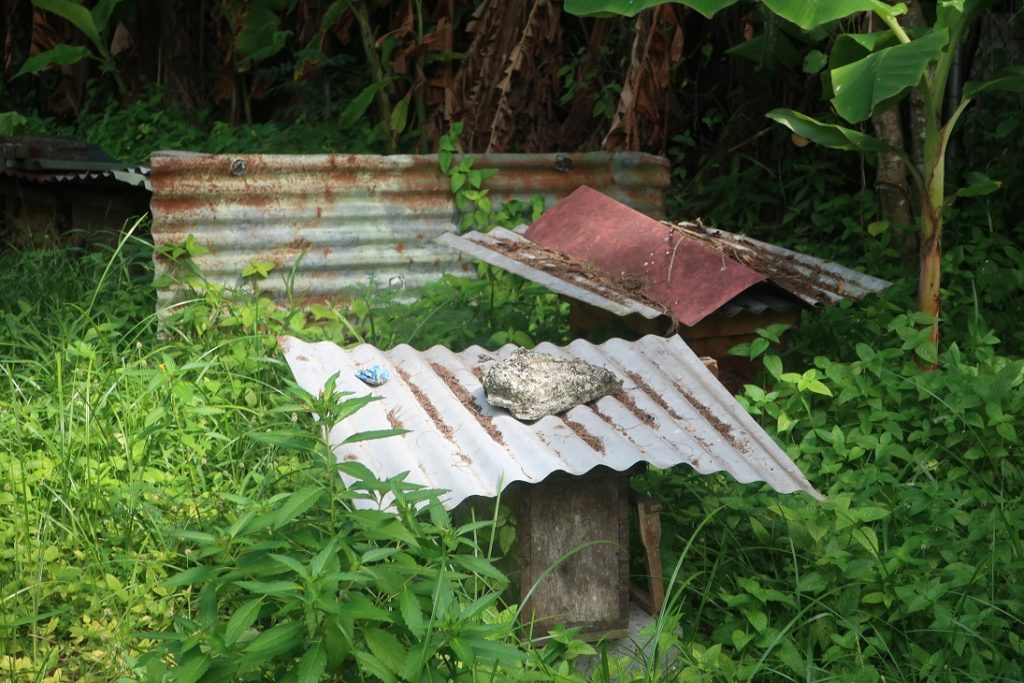
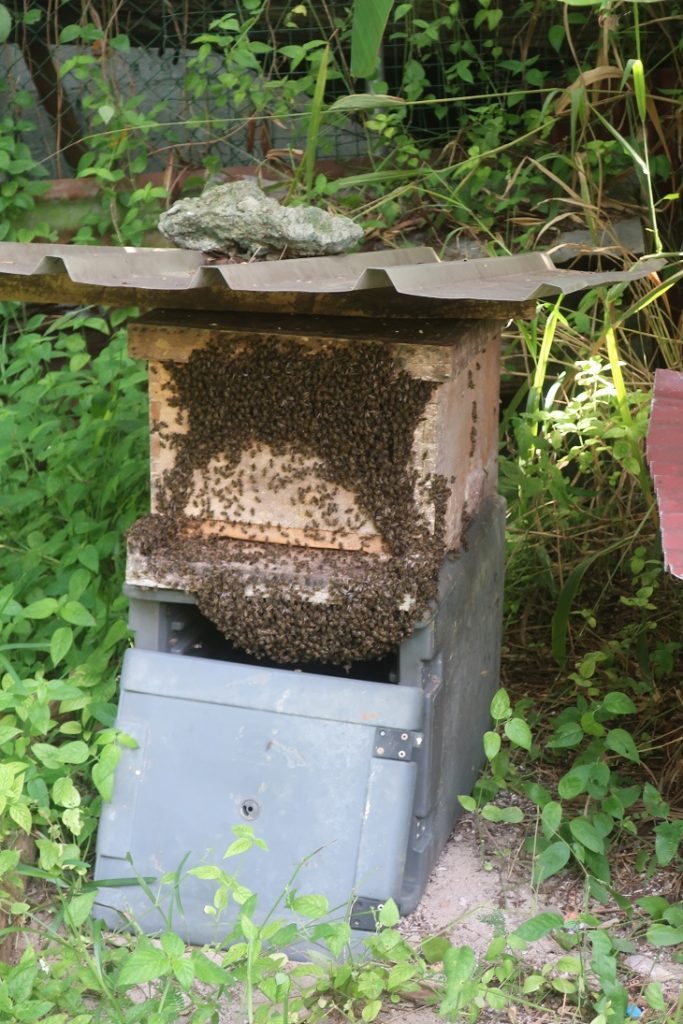
In the back yard are around 14 colonies on single brood boxes with a super each. Son is an enthusiastic new beekeeper and currently being mentored by Norman who will help him to relocate most of the hives to another site out of town soon. All the hives have tin covering the roofs to protect against weather and some are very busy. One colony has hundreds of bees bearding up the front outside which Norman tells us is because the colony needs another super. Sure enough, a couple of days later, Norman brings comb over to our hotel from this hive for us to sample.
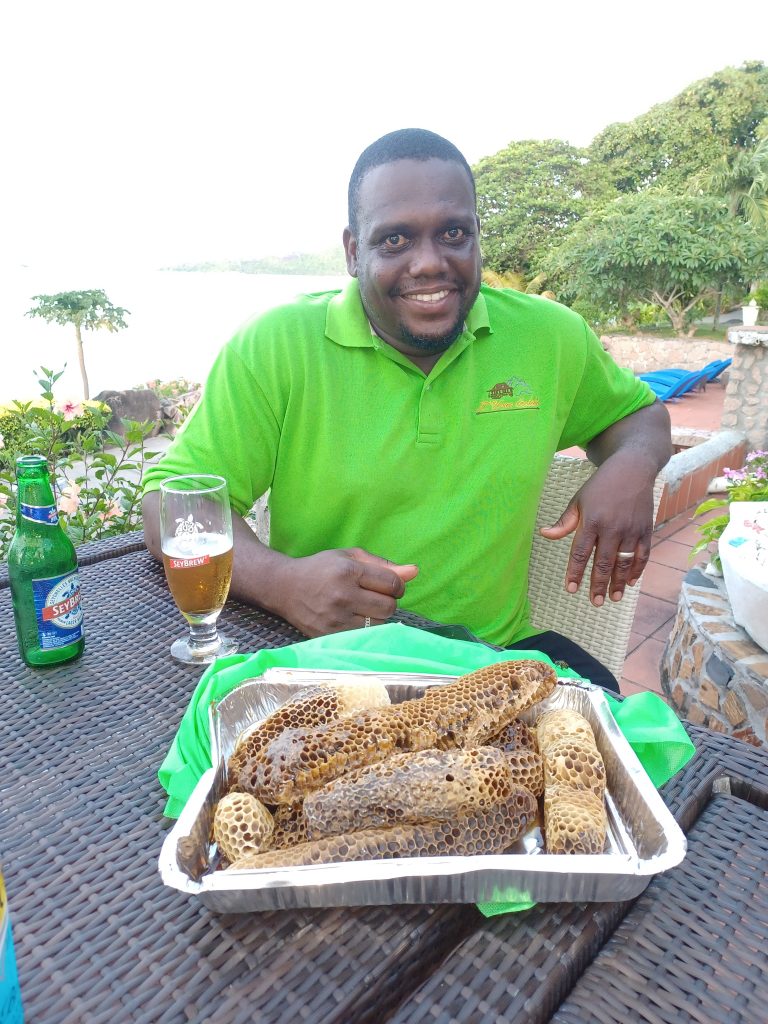
The bees have built wild comb in the roof space but they haven’t swarmed yet so another super will give the space they need. Because the comb has not been completely sealed yet the water content is high. High humidity at this time of year could cause a problem if a hive is not well fitting and lets in a lot of air. Otherwise bees in humid countries just work harder at evaporating nectar. This honey is very runny but a lot of the cells are unsealed so this is not a surprise. When I get home, I bring the refractometer out and test it. The sealed cell honey has a water content of 23%, but two samples from different parts of the container measure 24 and 25%. It is dark honey and even the newly built comb is very dark too. The honey has a fruity taste and is not as sweet as many honeys I’ve tasted. One friend remarked that it tastes like grapefruit. I’m going to take it along to a tasting session in May when my local beekeeping association has its next outdoor meeting and apiary inspection.
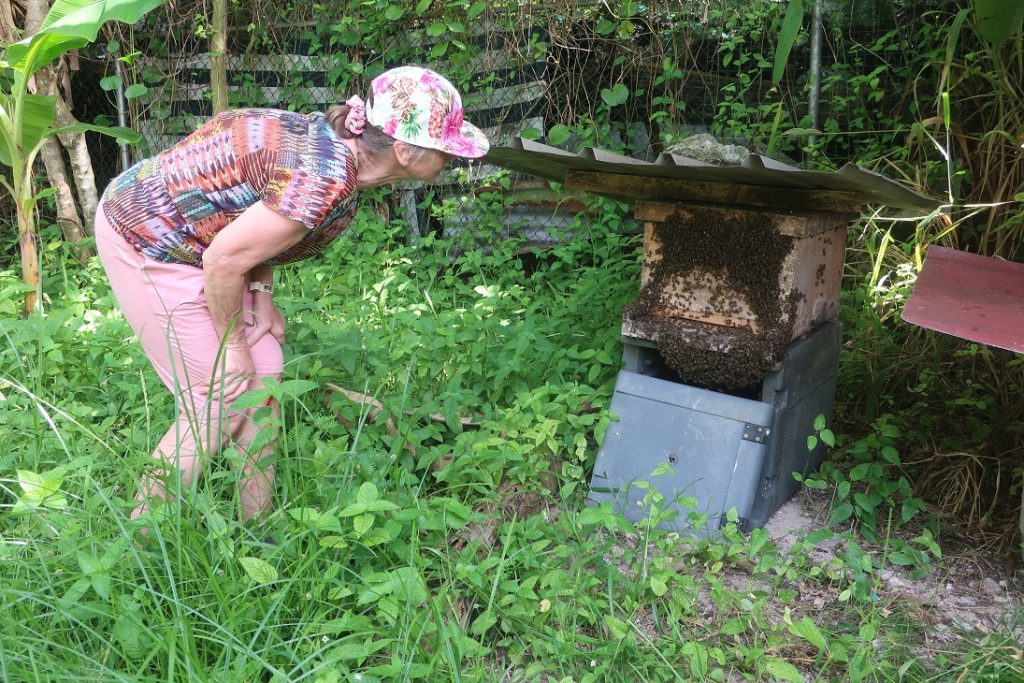
Queen Marking.
We discuss queen marking which Norman does but he doesn’t clip wings. He tells us that one of his old mentors used to prevent the queen from leaving the hive with a swarm by clipping her wings and tying a thread around her petiole. It reminded me of a story I heard of a beekeeper in Scotland who bought a cage to place over the hive entrance to prevent a swarm leaving his hive. It consisted of queen excluder material and was highly unsuccessful on the one occasion that he used it. The poor queen was pinned against the excluder on the inside, damaged, and killed as the full force of the swarm pushed up against the excluder to get out.
Forage.
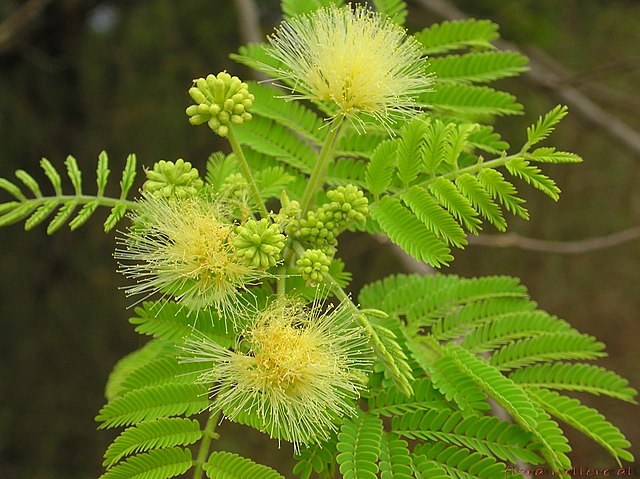
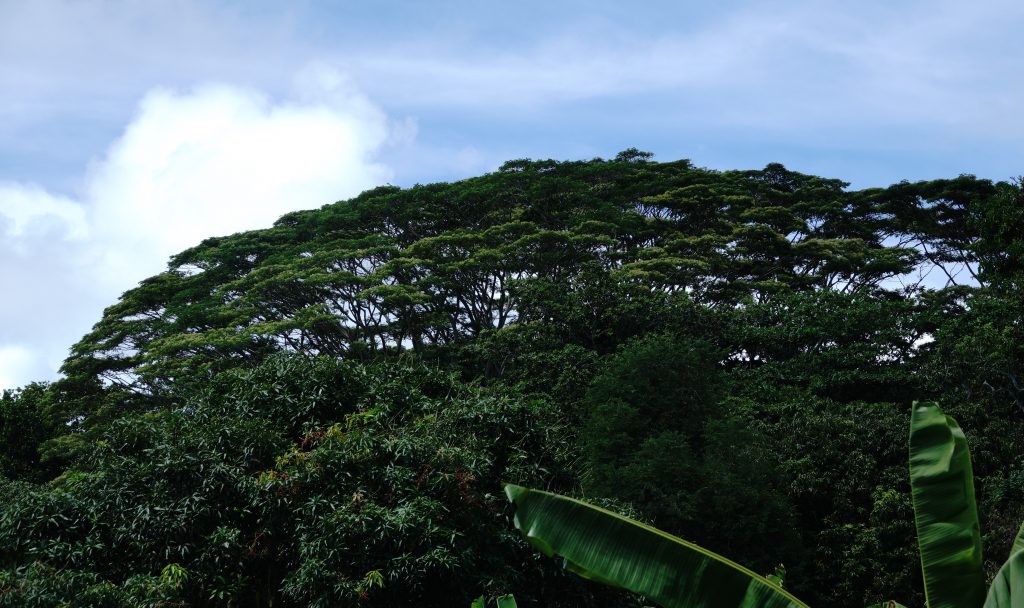
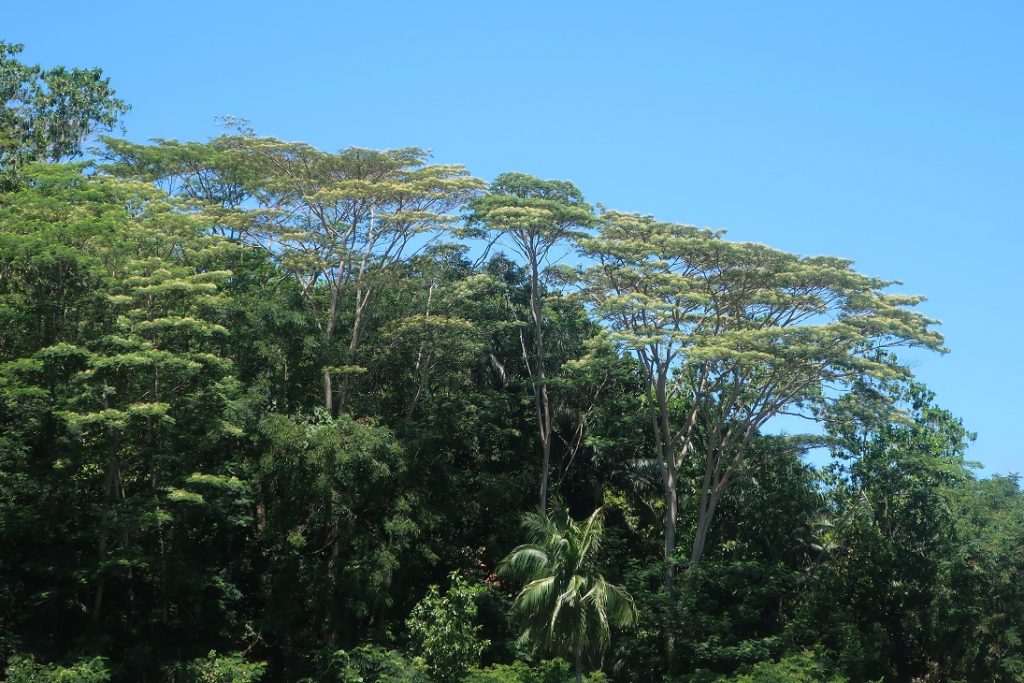
Norman talks about the popular forage plants on the islands and I am interested to learn that the most prolific nectar producer is a non-native introduced tree from the Fabaceae (pea) family called albizia (Alibizia spp.) This tree is closely related to mimosa and is one of 160 species. It grows all over the islands resembling great umbrellas standing out against the skyline. It was introduced from New Guinea in 1910 to reforest the islands for timber production. Unfortunately, the wood is soft and light and no good for furniture or charcoal making according to Mervin our taxi driver on Mahe who is also an accomplished chef and knows a bit about the natural history of his homeland. Albizia needs a lot of water and grows prolifically in the valleys where it takes advantage of the high humidity.
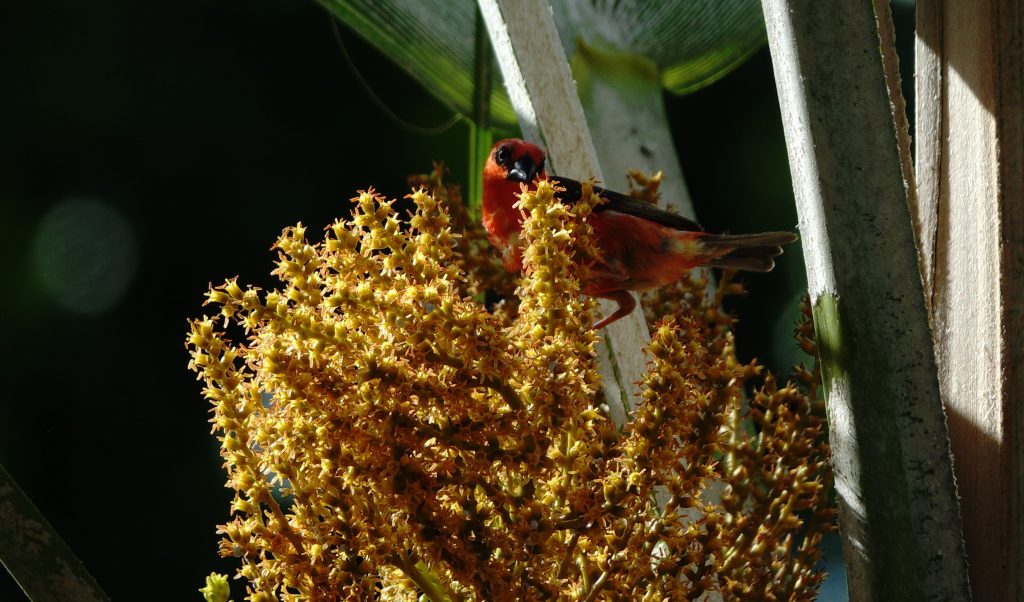

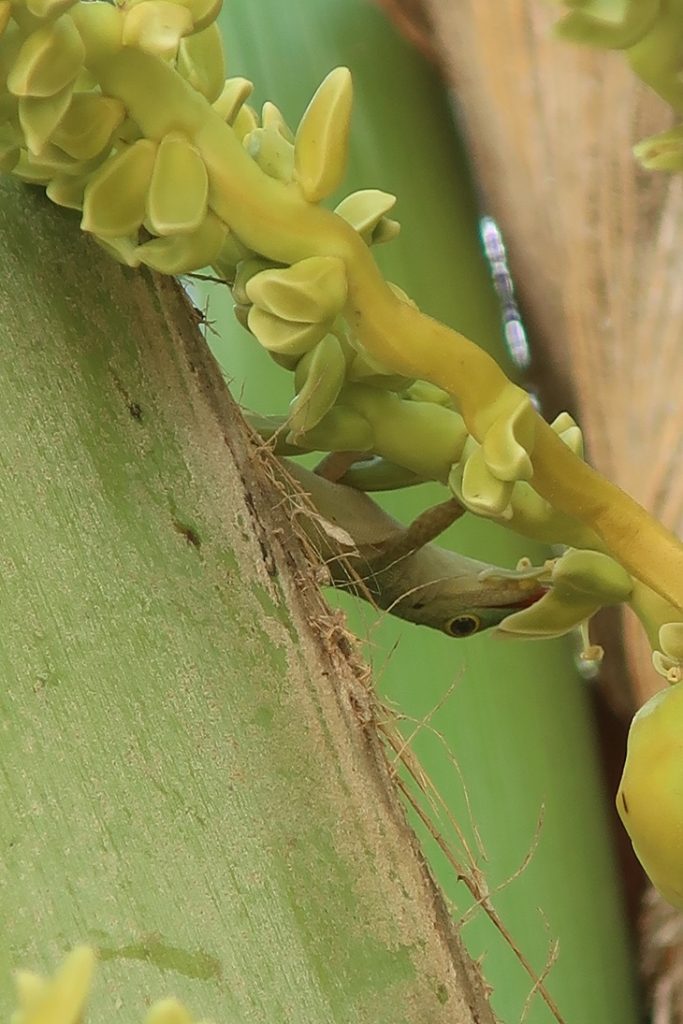
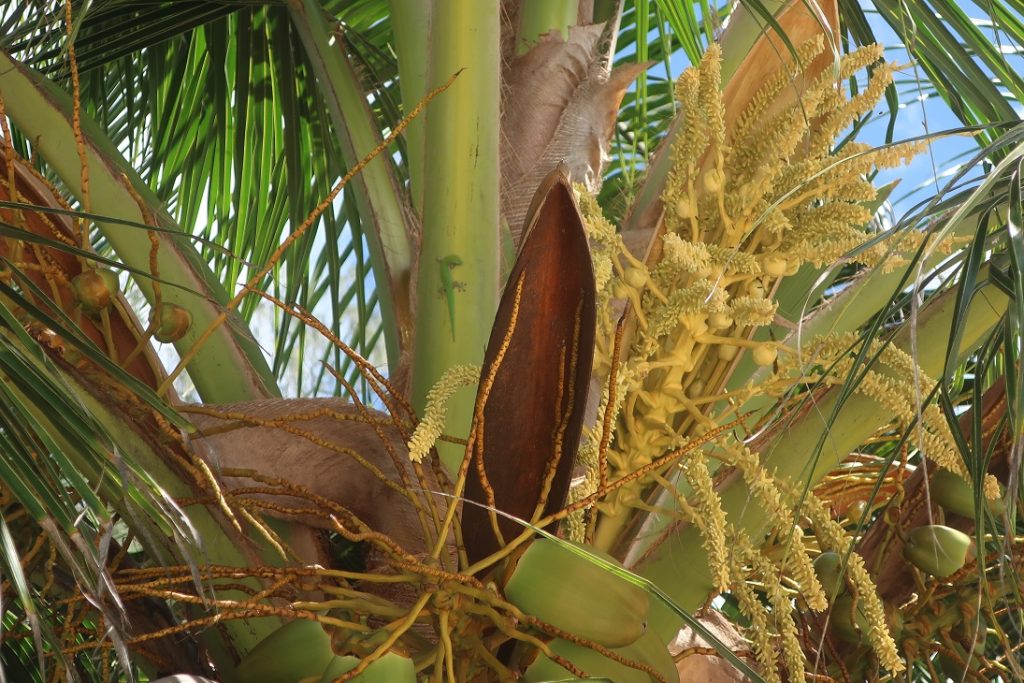
Another good pollen and nectar source is coconut palm flowers and I searched for some to photograph and realised just what a popular nectar source they are. There are no humming birds on Seychelles but there are Seychelles sunbirds Nectarinia dussumieri that have long beaks and look very like hummingbirds, see below. I was excited when I saw one drinking nectar. If you look closely in the above photo, you can see the green gecko waiting for his chance. The flowers attract honey bees and many other insects.
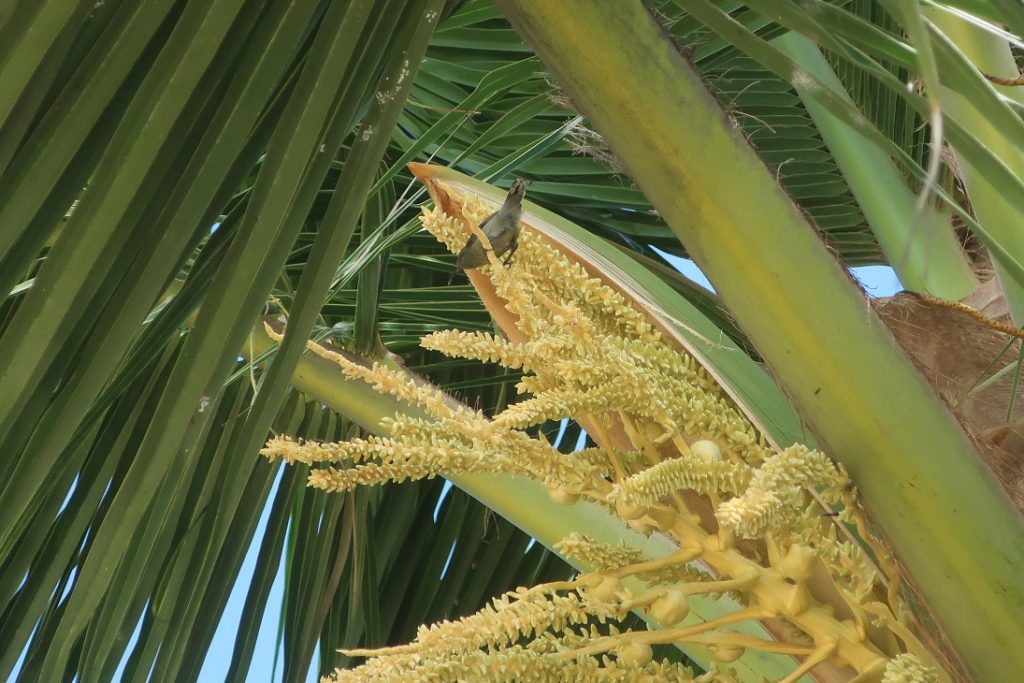
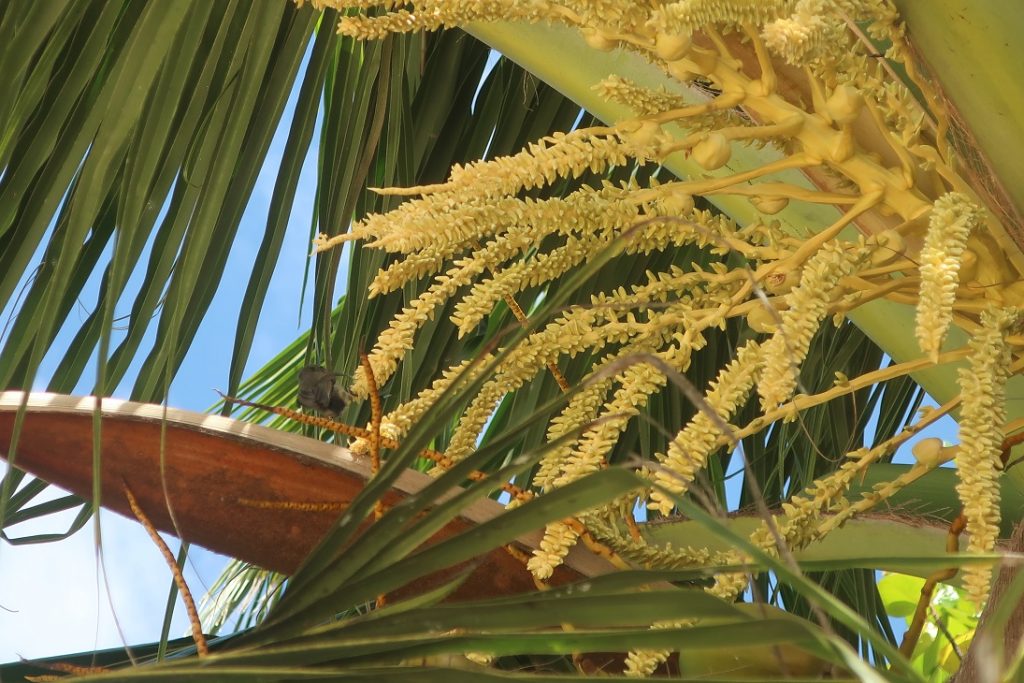
Takamaka.
Takamaka is a region of Mahe but Norman told me about a shrub also known locally as takamaka that produces lots of nectar.This tropical tree is called Calophyllum tacamaheca and is a member of the Calophyllaceae family and thrives near the coast but I wasn’t able to find one to photograph for you so this will have to wait till next visit.
Before we leave the island, I ask the head chef at the hotel why the breakfast honey is imported from the United Arab Emirates rather than local honey and he tells me that there is not enough local honey for a steady supply. Later Norman confirms this and the possibilities for increasing honey production on Seychelles. This is something that Norman can influence through his mentoring and education endeavours, and he may one day become a government bee advisor with more scope for developing beekeeping and honey production.
Thank you so much Norman for your giving your time so generously and answering all my questions. I am also very grateful to Patrick Samson Vice President of The Seychelles Beekeepers’ Association, for replying to my email in December and putting me in touch with Norman. I also wish to thank Paul and Son for their parts in making this such an exciting and interesting visit.
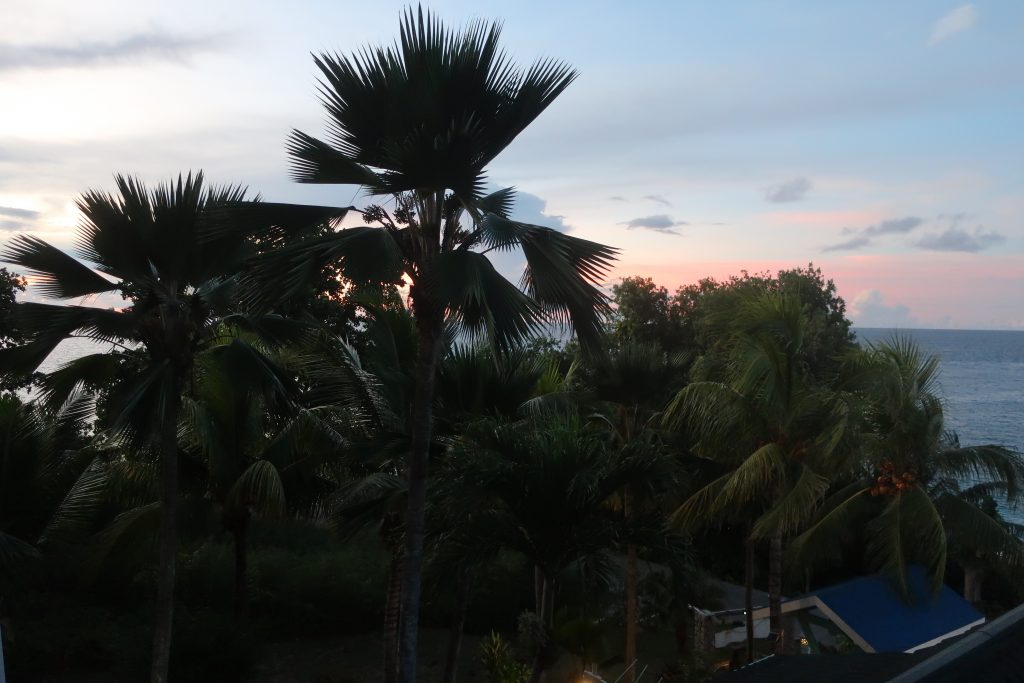
If you enjoyed reading this, you can subscribe to receive future posts by email. Also, if this article helped you with your work, please consider making a small donation to keep our site running. You can do this through the “Donate with Paypal” button that appears at the side of the screen if you are using a desktop, or by scrolling towards the bottom of the page if you are using a mobile.
Thank you, Ann 🐝

Thank you, Ann, for your descriptions of the bees, beekeepers, flora, and methods of beekeeping in the Seychelles. Lovely photo, too, of the deaths head moth as it stole honey but did not arouse defense responses of the nearby bees. Fascinating.
Hello Tom,
I’m glad that you liked the blog and thank you for commenting. I like Norman’s photo of the death’s head moth too and that the moth mimicked the hive odour to prevent detection.